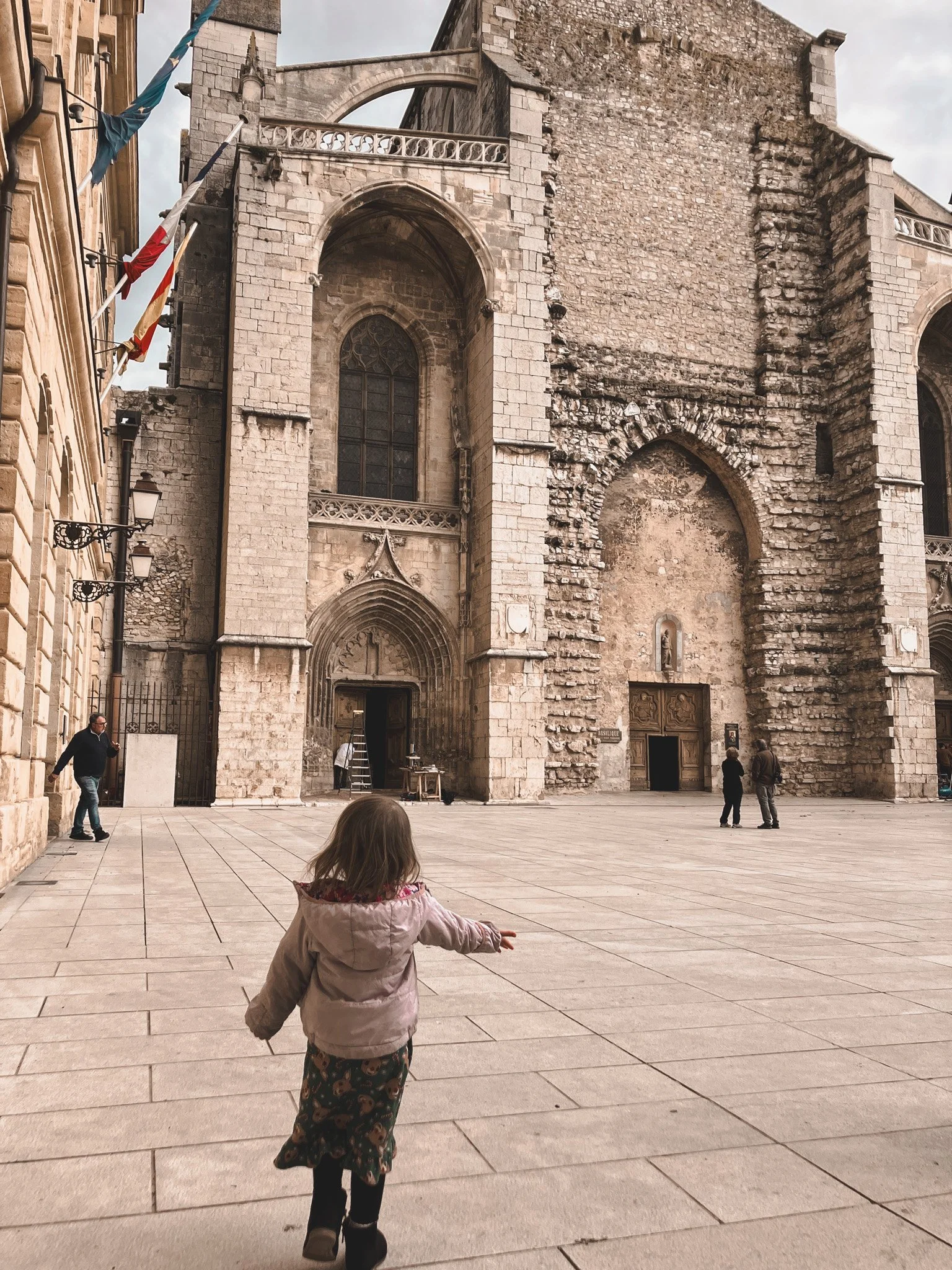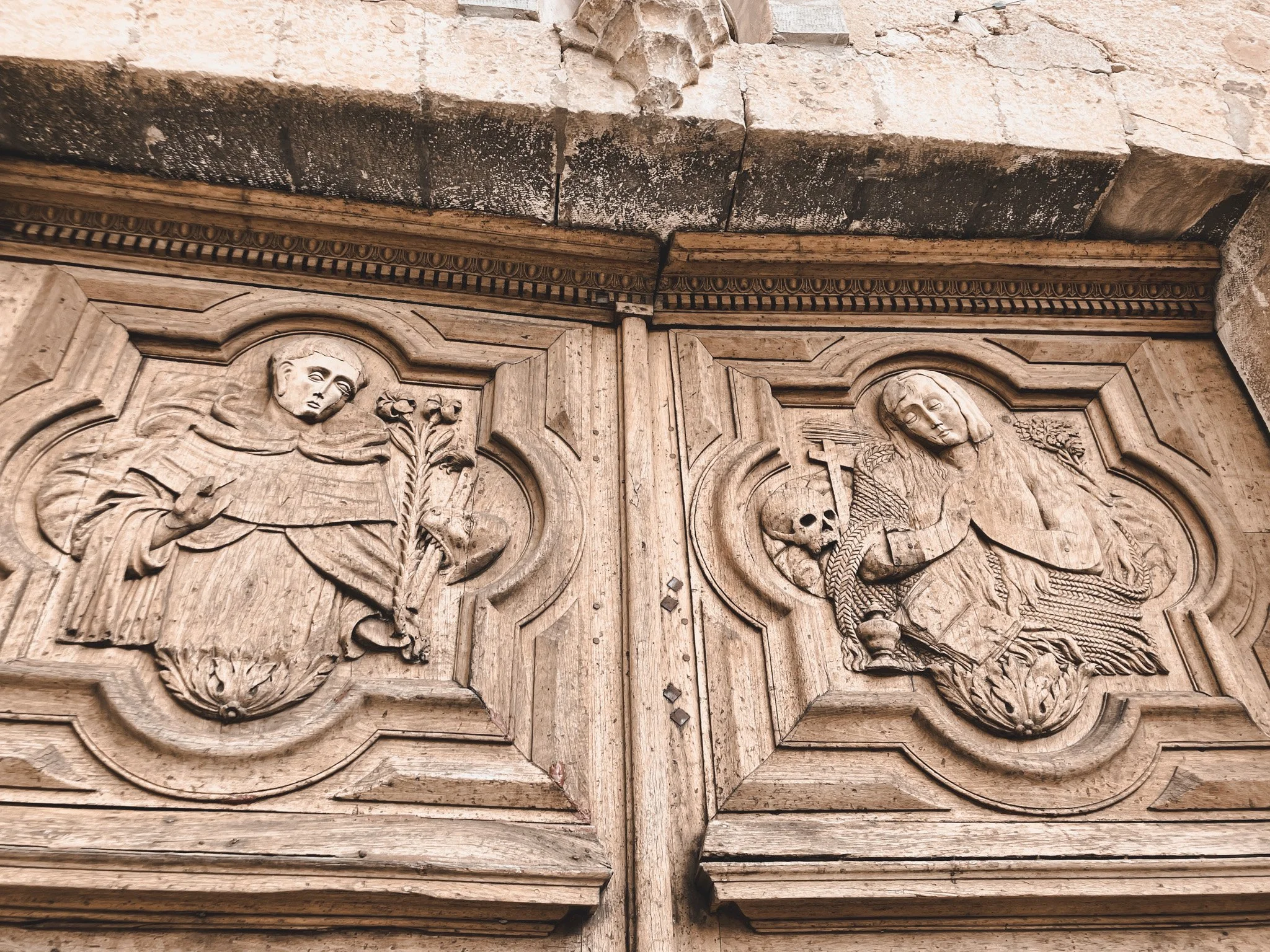Where are Mary Magdalene’s Relics? And Why I Ended up on A Pilgrimage in Southern France…
Before diving in, you may like to read my last post about visiting the sacred cave where Mary Magdalene lived out the last thirty years of her life. Read it here.
After visiting the caves, we made our way to the Basilica in Saint-Maximin-la-Sainte-Baume, thought to hold the relics of Mary Magdalene, and where her skull is on display in the crypt.
A Little Background on How I Ended up in Southern France Visiting Sacred Sites of Mary Magdalene:
I believe that Jesus, or Yeshua, as he was referred to in his times, was human as well as divine.
I believe that Mary Magdalene was a noble woman, and that Christianity would not even exist without her presence. She was the only Apostle to witness both the crucifixion and the resurrection.
In gospels of Mark and John, she is noted among the women standing near the cross when most of the male disciples have fled. (Along with Mother Mary)
In John 20:1–18: She is the first to arrive at the tomb, the first to witness the risen Christ, and the first to be commissioned by him to “go and tell” the others.
This is why early Christian mystics and modern scholars alike refer to her as the Apostola Apostolorum — the Apostle to the Apostles.
Some believe Mary Magdalene and Yeshua were beloveds, and had children.
But the Church wanted to portray Jesus they wanted him to seem holier than holy - a divine, non-sexual being, someone who was holier than human, because then, he would be Godly, otherworldly, and we would need the Church in order to connect with him.
It’s important to note the first institutionalized Christian church formed centuries after Jesus died on the cross. Before that, people were connecting directly to his teachings in small, scattered communities of those who had followed his teachings directly or indirectly. These early groups were more like mystery schools or spiritual circles than what we would recognize as "churches" today.
These Gnostic communities — many of whom regarded Mary Magdalene as a core teacher — preserved some of the most esoteric teachings of Christ. These included teachings on:
The divine spark within
The union of masculine and feminine
Direct inner knowing (gnosis) as a true path to salvation
According to my research, it wasn’t until the 4th century, under Emperor Constantine, that the Church was instituted.
In 313 AD, Constantine issued the Edict of Milan, legalizing Christianity.
In 325 AD, he convened the Council of Nicaea — which defined “orthodoxy”, declared some teachings heretical, and began the process of erasing the feminine, mysticism, and alternate gospels like the Gospel of Mary or the Gospel of Thomas.
But back to the question - why would the church deny Jesus had a wife?
If Jesus had a wife, and possibly children, he would be considered human, not so different than you and I.
We would see him walking a path of liberation through spiritual practice and love and forgiveness…
We would realize:
We too could walk a path like Jesus.
We too could become liberated and free.
We too could find the divine, a direct connection to God through our own body.
We too could remember that we are holy beings walking this Earth in a body vessel.
And with this truth, we wouldn’t need the Church to connect to God, or to Jesus.
We would be able to find the truth of the divine right here, right now, within.
We would not need to repent.
We would not need to see ourselves as sinners.
We would not need to give money to the Church to go to Heaven.
We would see ourselves as forgiven. As holy. As loved. As children of the divine.
When Pope Francis declared Mary Magdalene the Apostle of the Apostles in 2016, something awakened in me.
Up until that point, I had only ever heard that she was a prostitute and washed Jesus’ feet with her hair.
The truth:
She was a priestess.
A holy woman.
An equal to Jesus and the chosen one to continue his teachings after his death. (Which I believe is why he came to her at the resurrection)
After the crucifixion, Mary Magdalene went to Southern France (Gaul) on a boat with several others including Maximinus, her devoted student, Mary Salome (mother of James and John), Mary Jacobe (sister of the Virgin Mary), and their servant Sarah. (I’ll also note many people were named Mary because to be a “Mary” was more of a title, a level of initiation in Essene lineages)
I’ve heard different stories about this - that they were shipped off in a boat with no oars, food, or water, and guided by miracles made their way to Southern France.
Others say this was a trip planned with the help of Joseph of Arimathea, Jesus’ uncle.
Either way, it is said that they made an altar on the beach where they landed, and began to pray. From that spot a spring burst forth. And around that spot, a church was erected in Saintes-Maries-de-La-Mer - another place we visited on our pilgrimage.
From there, Mary went North, and began her ministry. There are many sacred churches and holy sites that honor her presence and ministry in Southern France today, places I have yearned to visit since opening to a spiritual connection with Mary in 2016.
But back to my story -
We arrived at the Basilica in Saint-Maximin-la-Sainte-Baume after our holy pilgrimage and hike to the cave where Mary lived out the last 30 years of her life. It was a sacred pilgrimage hike up a mountain where we were immersed in nature, awe, beauty, and truth.
And then we came down from the mountain, to the town of Saint-Maximin-la-Sainte-Baume to visit the Basilica that is said to hold her remains.
I felt embarrassed to share my true experience in the Basilica, that it would be disrespectful to a place said to be built in her honor…
But my experience inside the Basilica, was not a holy one.
My body tensed up entering that church.
“Maybe it’s just a little old, a little musty.” I thought
But my partner pointed out, “The pictures on the walls are just of men.”
There was one statue of Mary Magdalene as we walked down into the crypt, where her sarcophagus and skull are said to be held.
But there was her skull on display, as if beheaded.
The energy felt oppressive.
On the placard, next to the skull, there was mention that there was a missing piece from the forehead, that this was thought to be where Jesus held out his hand to her when he said, “Do not touch me — the words the Bible says Yeshua spoke to Magdalene at the Resurrection.
While many translations say he said, “Do not touch me,” others say it really was, “Do not cling to me.”
The line of “Do not touch me,” was used against Mary Magdalene for centuries, to show Christ pushing her away from Him. But in telling her “Do not cling to me,” he may have simply been inviting her to let go, because he wanted her to stand on her own when He was gone.
So, I can’t say much about my experience in the Basilica, other than I left that church feeling sad.
I imagined it had something to do with the early Catholic Church, and the Inquisition I was learning about, where the Church killed many (I’ve heard up to 800,000 people) of Mary’s spiritual descendants in Southern France, called the Cathars.
But something in me also was not so sure these were even really Mary’s bones.
It wasn’t until I returned home and began learning more, that I learned about Vézelay.
Vézelay was the original site that claimed to house the relics of Mary Magdalene, as early as the 9th century. The monks there said they had brought her bones from the region of Provence for safekeeping. For more than three centuries, Vézelay was one of the most significant pilgrimage sites in all of Christendom — revered not just for relics, but for healing, miracles, and the presence of the Magdalene herself.
From what I have seen from photos and videos - the basilica there is filled with light — architecturally, symbolically, and energetically. The crypt is adorned with seven-pointed stars — symbols of the feminine mysteries, the seven demons she was said to be freed from, and the seven chakra gates of transformation. The fleur-de-lis, symbol of divine feminine purity and sovereignty, is everywhere. Her reliquary glows with a power that many sensitives and mystics report as profoundly angelic, radiant, and true.
Now let us turn to Saint-Maximin-la-Sainte-Baume, and the narrative that overtook Vézelay’s claim.
In 1279, a full 35 years after the fall of Montségur — the last Cathar fortress where hundreds of Cathars were burned alive — Charles II of Anjou, a man aligned with the Church’s oppressive machinery, declared that the "true relics" of Mary Magdalene had been discovered in Saint-Maximin.
This declaration came at a time when the Church was actively erasing the Gnostic, Cathar, and Feminine Christ traditions, burning libraries, massacring communities, and silencing any teachings that honored the sacred union of Magdalene and Yeshua.
Who was chosen to guard and control these "newly discovered" bones?
The Dominicans — the very Inquisition order who led the crusade against the Cathars.
During the Inquisition, the Dominicans role in oppressing the Cathars, burning women as heretics, and silencing mystical teachings makes their guardianship of Magdalene’s supposed remains at Saint-Maximin problematic.
They were never initiates of the inner mysteries. They were enforcers of doctrine.
Is it possible that Mary Magdalene’s memory had been co-opted by those who once hunted her spiritual descendants? Could this have been an act of domination? A rewriting of history?
And I didn’t know it at the time, but I think that’s why I felt off in this Church.
The skull on display — Magdalene, who carried the sacred myrrh, the woman of resurrection, reduced to a spectacle. Her story, her teachings, her embodiment of the divine feminine stripped, and her remains used to legitimize the very patriarchy that hunted her lineage.
So Where Are Her Bones?
Historically? The answer remains in debate. But spiritually? I did not feel the spirit of Magdalene in this Church the way I did in those caves, or from what I hear people experience at Vézelay.
At the end of the day, Mary Magdalene’s spirit cannot be reduced to bones… actually the whole tradition of digging up someone’s resting place in the Earth feels off..
But I know she lives on, in us.
In every woman rising to reclaim the lost wisdom.
In every moment we honor the sacred union of the masculine and feminine.
And in the silence of our own body … when we descend into sacred listening.
The Cathars said, “Truth is found not in books, but in the heart.”
May we continue to listen to what we know is true in our hearts.
Blessed Be… Thank you for reading.
I would love to hear in the comments - how does this land for you? Are you enjoying this kind of content? Should I keep going?
With love,
Meredith
Enter Your Name and Email Below to Learn More about our Priestess Initiation Program
Download the Program Guide





